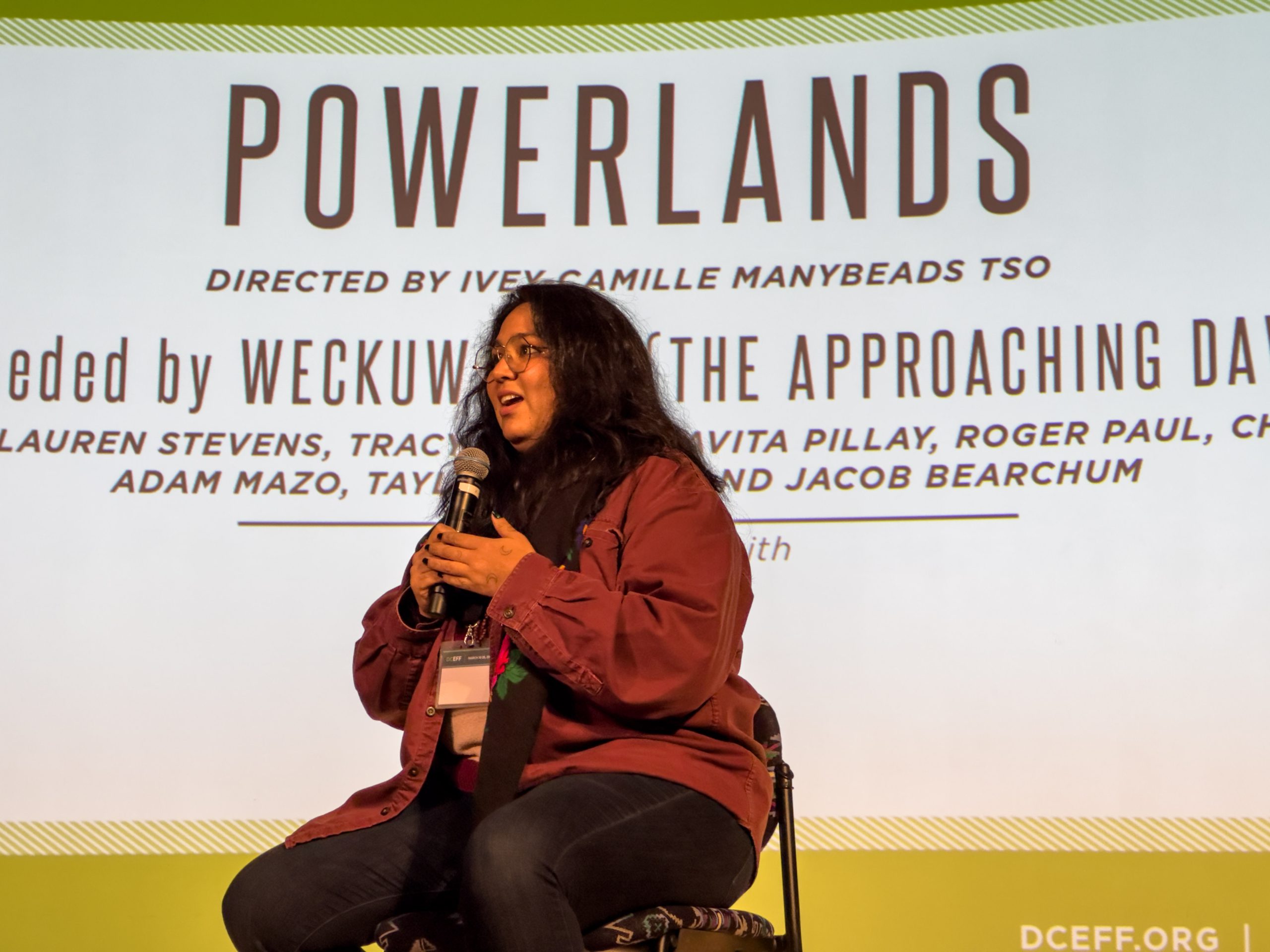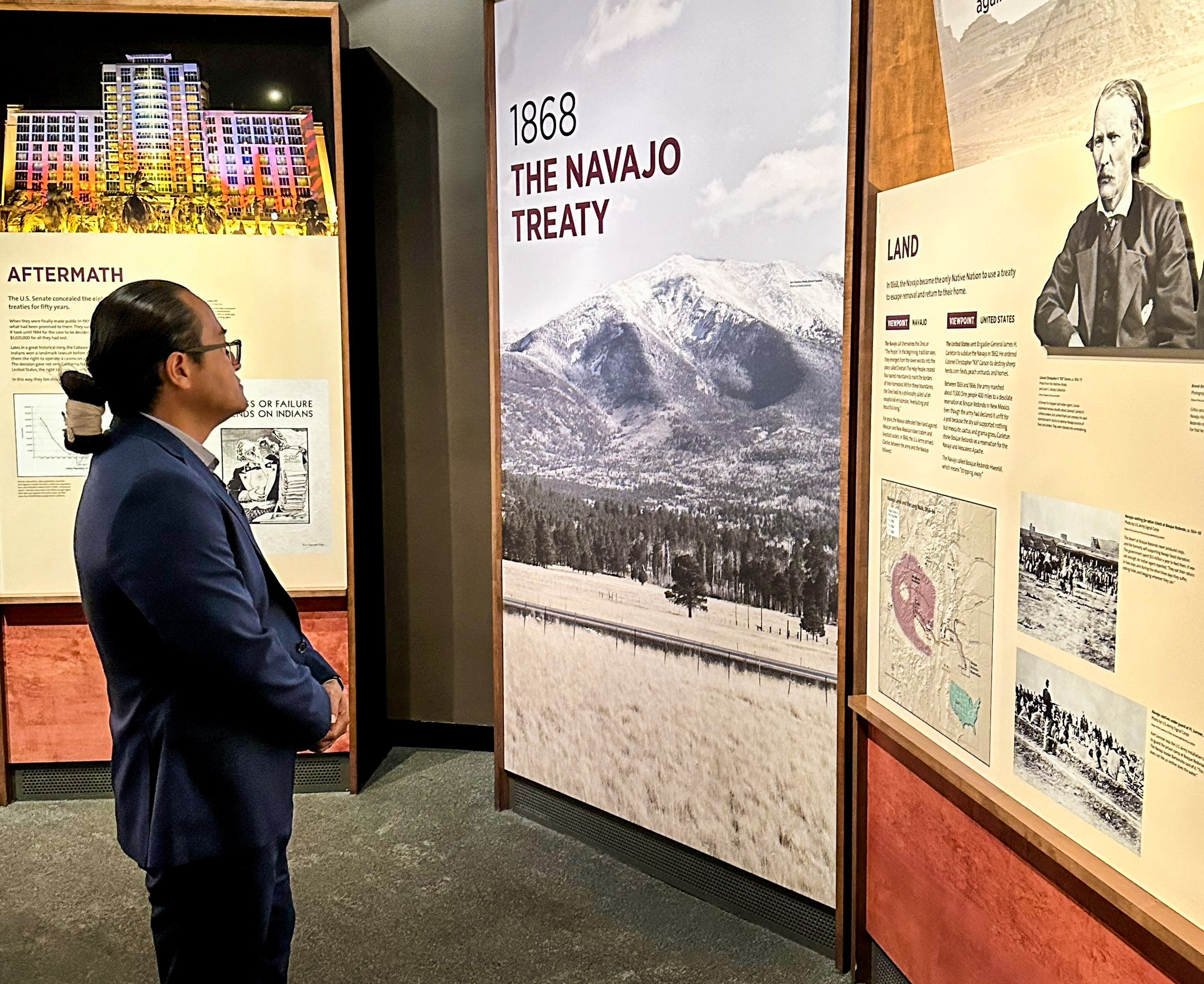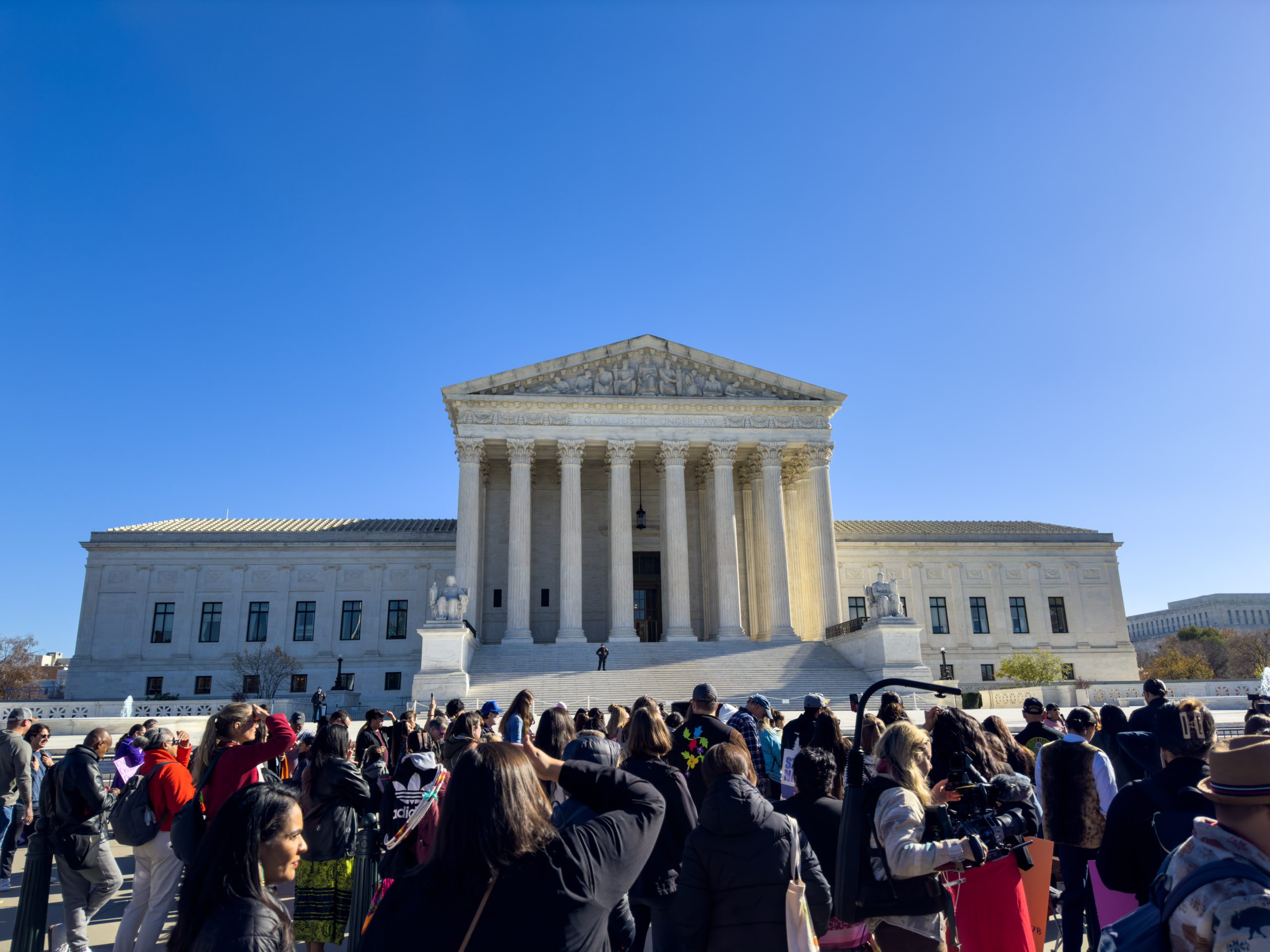Indianz.Com > News > ‘We’re still here’: Native film depicts struggles as Navajo Nation heads to U.S. Supreme Court
‘We’re still here’
Native film depicts struggles as Navajo Nation heads to U.S. Supreme Court
Monday, March 20, 2023
Indianz.Com
WASHINGTON, D.C. — With the Navajo Nation headed to a showdown at the U.S. Supreme Court, one Native filmmaker is drawing attention to the struggles Indigenous peoples face around the world as they work to protect their lands and resources.
Speaking at the National Museum of the American Indian on Sunday, Ivey Camille Manybeads Tso said her family has been negatively impacted by resource extraction on the Navajo Nation. Through a lease that was approved by the federal government, the world’s largest coal company made billions of dollars from a mining site on the reservation.
“We succeeded in the fact that we’re still here, because it’s been a resistance has been happening for sixty, seventy years — including my entire family,” Manybeads Tso said after she screened her film, Powerlands, as part of the 2023 Environmental Film Festival in the Nation’s Capital.
Powerlands doesn’t just focus on the Navajo Nation, the largest reservation in the United States. As director of the film, Manybeads Tso took the project to Indigenous communities in Mexico, Colombia and The Philippines, where resistance falls among familiar lines of marginalized peoples fighting against large and powerful entities.
“We are working against this huge monolith of corporations and governments that are really trying to not necessarily help us,” Manybeads Tso said at the NMAI.


The last time the Navajo Nation went before the Supreme Court, incidentally, was in connection to Peabody Energy’s coal mining operation. The tribe had argued that the Department of the Interior, which was then led by then-Secretary Don Hodel during the Ronald Regan era, breached its trust responsibilities by approving a lease with a less-than-favorable royalty rate after being lobbied by a close associate who happened to be working for Peabody. The Supreme Court, at the behest of the George W. Bush administration, rejected the tribe’s claim in 2003. A follow-up case went against the tribe in 2009. However, the Barack Obama administration later settled a closely-related trust accounting lawsuit with the tribe for $554 million. In the prior cases, as with the current Colorado River dispute, the tribe had won at a lower court, only to see the high court reverse the victories. This time around, state governments and the Biden administration are seeking to overturn a favorable ruling from the 9th Circuit Court of Appeals. The Supreme Court granted the state petition, Arizona v. Navajo Nation, and the Biden petition, Department of the Interior v. Navajo Nation on November 4, 2022. The cases were consolidated in advance of Monday’s oral argument. Still, the questions presented are different. While both focus on the trust obligations of the United States, the state petition also asks whether the Navajo Nation’s efforts to secure water from the Colorado River would “infringe” upon their rights. The Supreme Court argument is due to begin at 10am Eastern. It will be broadcast on supremecourt.gov. C-SPAN will also carry a livestream at c-span.org. Another stream can be found on PBS NewsHour.Water is a sacred resource, and water rights are crucial to ensuring the health, safety and empowerment of Tribal communities. Thanks to @POTUS' Bipartisan Infrastructure Law, @Interior can ensure they receive the water resources they deserve. https://t.co/MD5Pwsv2na
— Secretary Deb Haaland (@SecDebHaaland) February 2, 2023
9th Circuit Court of Appeals Decision
Navajo Nation v.
Department of the Interior (Filed April 28, 2021 / Amended February 17, 2022)
U.S. Supreme Court Documents
Question Presented: Arizona v. Navajo NationQuestion Presented: Department of the Interior v. Navajo Nation
Docket No. 21-1484: Arizona v. Navajo Nation
Docket No. 22-51: Department of the Interior v. Navajo Nation
Tribal Supreme Court Project Documents
Arizona v. Navajo Nation (sct.narf.org)Department of the Interior v. Navajo Nation (sct.narf.org)
Related Stories
Search
Filed Under
Tags
More Headlines
Native America Calling: A sample of Native Guitars Tour 2024
Native America Calling: How Native literature is changing the mainstream narrative
Native America Calling: No ordinary animal
Native America Calling: Safeguards on Artificial Intelligence
NAFOA: 5 Things You Need to Know this Week
Chuck Hoskin: Cherokee Nation takes the lead for our environment
Native America Calling: Earth Day assessment for Native peoples
Cronkite News: Gathering addresses ‘epidemic’ among Native people
VIDEO: Cody Desautel on tribes and federal forest management
AUDIO: Legislative Hearing on Discussion Draft of Forest Management Bill
Native America Calling: Remembering the 1974 Navajo border town murders
Native America Calling: Can the right approach close the Native immunization gap?
Cronkite News: Long COVID cases remain high in Arizona
Native America Calling: Eyes in the sky for development, public safety, and recreation
Native America Calling: Three new films offer diverse views of Native life
More Headlines
Native America Calling: How Native literature is changing the mainstream narrative
Native America Calling: No ordinary animal
Native America Calling: Safeguards on Artificial Intelligence
NAFOA: 5 Things You Need to Know this Week
Chuck Hoskin: Cherokee Nation takes the lead for our environment
Native America Calling: Earth Day assessment for Native peoples
Cronkite News: Gathering addresses ‘epidemic’ among Native people
VIDEO: Cody Desautel on tribes and federal forest management
AUDIO: Legislative Hearing on Discussion Draft of Forest Management Bill
Native America Calling: Remembering the 1974 Navajo border town murders
Native America Calling: Can the right approach close the Native immunization gap?
Cronkite News: Long COVID cases remain high in Arizona
Native America Calling: Eyes in the sky for development, public safety, and recreation
Native America Calling: Three new films offer diverse views of Native life
More Headlines
